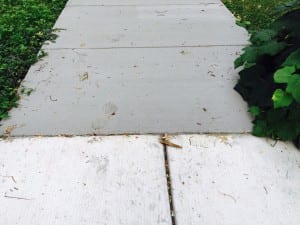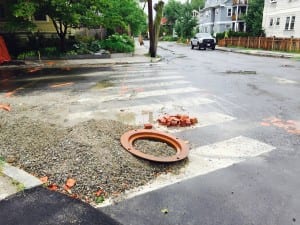I attended three community meetings this week at which residents of three different areas expressed strong opinions, outrage and fear on three very different issues affecting their neighborhoods: violent crime, street construction, and rats.
Monday’s community meeting concerned the murder earlier this month of a young black man in Area 4/The Port. Rasaun Nichols was shot multiple times while in a car outside a public housing complex a couple of blocks from his home. The hour was not late (around 8:40 pm) and police officers were on foot patrol very nearby. Tragically Nichols died as a friend tried to drive him to a hospital. At the meeting Middlesex District Attorney Marian Ryan and Cambridge Police Commissioner Robert Haas assured anxious residents that the investigation may soon yield an arrest and thanked the community for its cooperation, but there were emotional appeals to the councillors present to approve installing video cameras on their streets. I understand the deep well of fear, anger and frustration that fuels such demands from residents of areas with a higher incidence of violent crime, but I don’t believe surveillance cameras on every lamppost are the answer. Gun control, more community policing and foot/bike patrols, workforce development programs, a $15 minimum wage, summer job and youth enrichment programs, and more counseling for victims of trauma and abuse are all needed to address the root causes of violent crime. (8/24 Update: A Medford man is due to be arraigned today in connection with Nichols’ death.)
On Tuesday night I attended a meeting in Huron Village that, following the prior night’s anguished discussion, would be easy to dismiss as a bunch of privileged white people whining about the color of their new sidewalks. True, the meeting with DPW leaders had been called by well-off white residents upset with the dark blue-gray hue of the cement used for sidewalks on two residential streets — hardly a life and death issue. But the color is considerably darker and more institutional looking than that of sidewalks poured just last fall on several adjacent streets, and residents feel the darker color detracts from the residential character of the affected streets (see petition). They don’t want to see this color used on other streets in the area and question how the same specs could produce such a wide variation in hues. DPW head Owen O’Riordan and chief engineer Kathy Watkins agreed to look into dialing back the pigment but were firm that the blue-gray sidewalks would not be replaced (the extra cost would have to be borne by the city since the hue was within project specifications). In my opinion the angst over the color would not have been as pronounced if it were not part of a larger pattern of sloppy, rushed finish work — after 3 years of enduring dust clouds, bone rattling vibrations, jackhammering, street and sidewalk detours, structural damage, water main breaks and gas leaks, and construction equipment cluttering streets and blocking views, it’s not a bit surprising that residents are operating on a hair trigger. When residents first raised concerns about the unusually dark color of some sidewalks in June the contractor should have immediately stopped pouring cement until the color could be re-calibrated to a better match. A few days later I stumbled, literally, on a pile of bricks and dirt carelessly left overnight in the middle of a crosswalk. I invite anyone who believes West Cambridge residents’ complaints are baseless to walk a few blocks in our shoes — and do it every day for 3+ years.
Up in North Cambridge an infestation of rats has residents of the Dudley Street area up in arms, and many turned out for a meeting of the North Cambridge Stabilization Committee on Wednesday night. A city sanitation inspector blamed overflowing and leaking dumpsters behind a block of restaurants on Mass Ave for inviting the rats to feast. However some residents suspected that rats had fled the Jefferson Park apartments, which were demolished earlier this summer, despite assurances from the Housing Authority that there had been no rat problem there. Others worried that home composting, over abundant vegetable gardens, garbage cans without lids have aggravated the rodent problem. All of the above likely are contributing to the sudden increase in rats, and residents are justifiably angry with the situation. Stiffer fines and swifter sanctions against restaurants and dumpster haulers that improperly dispose of food waste and a public information campaign to educate residents on securing household and garden waste are clearly needed. In the meantime residents are left to hire exterminators and repair retaining walls and gardens damaged by rodent burrows.
I finally visited the (IMHO) over-hyped Lawn on D in South Boston on Saturday with two of my grown-up children. The park has been billed as a “playground for adults” and maybe it’s more appealing at night after a few beers. The swings were amusing but hardly “vaux le voyage” as the Michelin guide might say. All I could think was how starved for public open spaces Boston residents must be if lifesaver-shaped swings, ping pong tables, food trucks, and a lawn without trees have attracted this much glowing press. If the space does remain undeveloped I hope Boston will design a park that feels less like a college quad during spring fling and more like, say, the Place des Vosges in Paris or Bryant Park in New York City. For now, the attractions of the Lawn on D are as flimsy as its plastic picnic table benches, which kept tipping over as people tried to sit.




No Comments